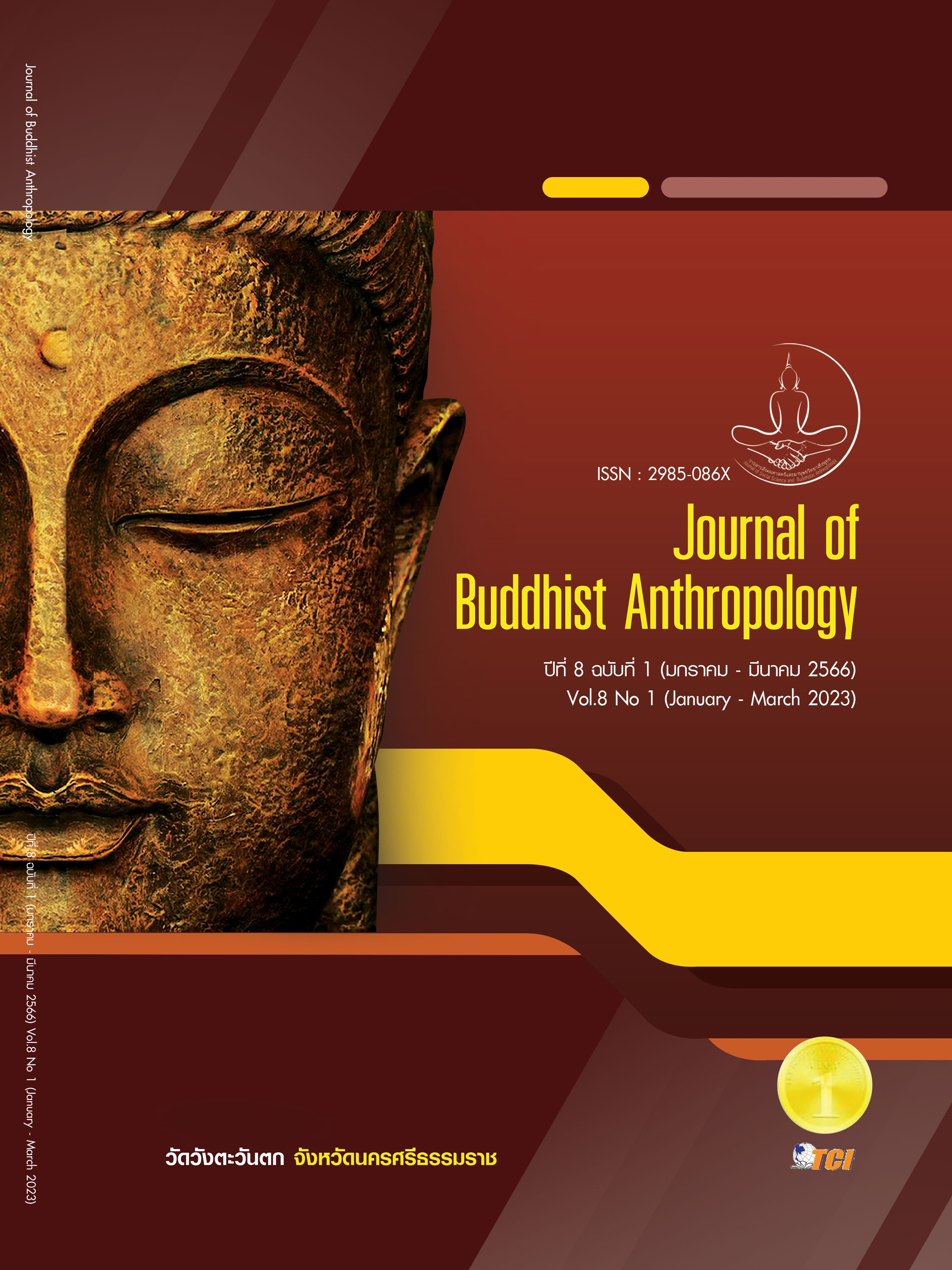CETIYA (PAGODA) AS A COMMUNICATION OF BUDDHIST CULTURE AND PHILOSOPHY IN ASEAN COUNTRIES
Keywords:
Cetiya (Pagoda), Communication of Buddhist Culture, Philosophy, ASEAN CountriesAbstract
Background: This academic article aimed to study The Cetiya or Stupa which is a repository for The Lord Buddha's relics and considered a sacred place. After The time of The Great Decease of The Lord Buddha, Buddhist monks and laymen managed to handle The Lord Buddha's remains in the traditional manner. During the reign of Emperor Ashoka the Great, he ordered that the "Sanchi Great Stupa" be built, which was later the model for the construction of other great Cetiya and Stupa in different parts of the world and also influenced Buddhist doctrine, belief, culture, philosophy and morals. Cetiya construction in ancient India developed from a simple mound above the grave to a bell shape and other shapes over time after mixing with local patterns. In terms of symbolic significance, Cetiya convey certain elements of Buddhist philosophy. For instance, Cetiya's round-shaped base refers to Samsàravatta, or the round of existence or The Wheel of Rebirth, while a rectangular base refers to Satipatthàna or The Four Foundations of Mindfulness, for the purpose of considering the cause of impurities. The second level of the rectangular base of Cetiya reminds us of the principle of Iddhipàda (The Four Paths of Accomplishment), while the middle part or body of the Cetiya refers to Magga 4 (The Four Noble Paths) and Phala 4 (The Four Consequences), the top part of The Cetiya refers to The Attainment of Absolute Truth or Nibbàna.
Involvement to Buddhadhamma: However, when Buddhists comes to pay homage to a Cetiya, they will first think of The Lord Buddha and then The Dhamma. For instance, the symbols found at Phra Borommathat Chedi in Nakhon Si Thammarat can be interpreted in Buddhist philosophy as follows. The Càga principle refers to sacrifice, that is, the construction of Cetiya requires sacrifice by the antecedent, who might have to renounce huge amounts of money and other properties. The principle of Katannukatavedità refers to the quality of being a grateful person who is thankful for any benefits received from the antecedent and The Lord Buddha, The Dhamma and The Sangha. The principle of Three Characteristics or Tilakkhana which the Cetiya has been erected, it stands for a certain period of time before gradually decaying by natural forces, and then needs repair periodically. The Cetiya can also be compared as Sumeru (Mount Meru), which is considered to be the center of the Universe. It is surrounded by seven tiers of smaller mounts while The Lord Buddha held the position superior to Indra. This means that The Lord Buddha was superior to Càtummahàràjikà or The Four Guardian Deities, who were closest to human beings and were in charge of protecting The Four Directions of The World. Moreover, ASEAN countries follow Theravada Buddhism include Myanmar, Thailand, Laos, Cambodia, and some parts of Malaysia. For Vietnam and Singapore, these countries believe in Mahayana Buddhism. The countries with the same denomination will have a similar Cetiya design. This is the role of Buddhists to preserve Buddhism, and it is the duty of the King to protect the country peacefully by using religion to create peacefulness and stability.
Conclusions: Therefore, the construction of Cetiya has been collected the relics of Lord Buddha, Noble disciples, religious relics or even the bones of ancestors and important people. Cetiya has been seen as spiritual centers for Buddhists while at the same time communicating Buddhist philosophy which can symbolize a religious foundation. Furthermore, a Cetiya is able to communicate nationality, religions and the king, the three pillars of the nation and is a symbol of communication, which has the role of inheriting The Dhamma and philosophy principles representing the sanctuary of Buddhism. Again, Cetiya is a source of culture, tradition, arts, history, literature, rites, festivals, local, state and international tourism, as well as being a mechanism for the establishment of relationships among different ethnic groups, either in the past or in the future.
References
Choovichian, P. (2010). Phraboromathatchetiya, Nakhon Si Thammarat: The great Stupa in Southern Phenninsula. Ancient City Press.
The Fine Arts Department. (1990). The Evolution of Thai Buddhism. Amarin Printing Group Co. Ltd.
The Fine Arts Department. (1983). A Stone Inscription in Sukhothai, Lai-Sue Thai. The Fine Arts Department.
Ksabinlasing, C. (2013). Buddhism in Neighboring Country. Ruean Kaew Printing.
Leksukhum, S. (1995). Cetiya: In and Out of The Island of krung Sri Ayuthaya. Matichon Press.
Mahachulalongkornrajavidyalaya University. (1996). Tipitaka. (Thai Version). Bangkok: Mahachula- longkornrajavidyalaya Press.
Mungthanee, T. (2022). Buddhist Cetiya: Meaning and Basic Concepts of Iconography. Journal of Philosophy and Religion. 7(1), 93-115.
Phra Dhammapitaka (P. A. Payutto). (1984). Thai Buddhism in The Buddhist World. Sahadhammika Co., LTD.
Phra Phromkunaphon (P. A. Pyutto). (2009). Buddhism in Asia (5th edition). Dhammasapha.
Phramaha Daosiam Vachirapanyo. (2012). Buddhism in Laos. Medthray Printing.
Phramaha Daosiam Vachirapanyo. (2014). Buddhism in Vietnam. Medthray Printing.
Phya Anuman Rajadhan. (1960). Cetiya. Royal Academy.
Prince Krom Phraya Narisara Nuwattiwong. (2010). Prince Krom Phraya Narisara Nuwatthiwong has recorded Various Knowledge given to Phraya Anumarajathon (2nd edition). Thai Wattana Panich.
HRH Prince Damrong Rajanubhab. (2010). A History of Buddhist Monuments in Siam. The Siam society under Royal Patronage.
HRH Prince Damrong Rajanubhab. (2015). The Legend of Buddhist Cetiya. Banagarn Publisher.
Tingsunjalee, C. (2012). Mon-Myanmar Arts: The Formal Development since Srikaset Arts till Mondalay Arts. Ancient City Press.
Wickramasinghe, M. (1997). Sinhala Language and Culture Buddhism and Art. Tisara Prakasakayo LTD.
Downloads
Published
How to Cite
Issue
Section
License
Copyright (c) 2023 Journal of Social Science and Buddhistic Anthropology

This work is licensed under a Creative Commons Attribution-NonCommercial-NoDerivatives 4.0 International License.








